The Hateful Eight Review (70mm Roadshow)

Cold wind grabs a small group of men, their coats only a mediocre protection from the freezing winter temperatures. Berlin. January 26, 2016. We stand in line for the red carpet premiere of the 70mm Roadshow version of The Hateful Eight, Quentin Tarantino‘s 8th motion picture, and the third one I witness premiering in Germany. After this, they will visit Rome and Mexico City. The Zoo Palast theater is one of only four theaters in the country showing the 70mm version, excitement is in the air as we take our seats among politicians, A through D grade celebrities, directors Quentin Tarantino and Tom Tykwer, the cast (Kurt Russell and Jennifer Jason Leigh attend), Universum’s (the distributor) president and excited film buffs from all over. Ennio Morricone is in the air, as the curtain makes way for the overture…..
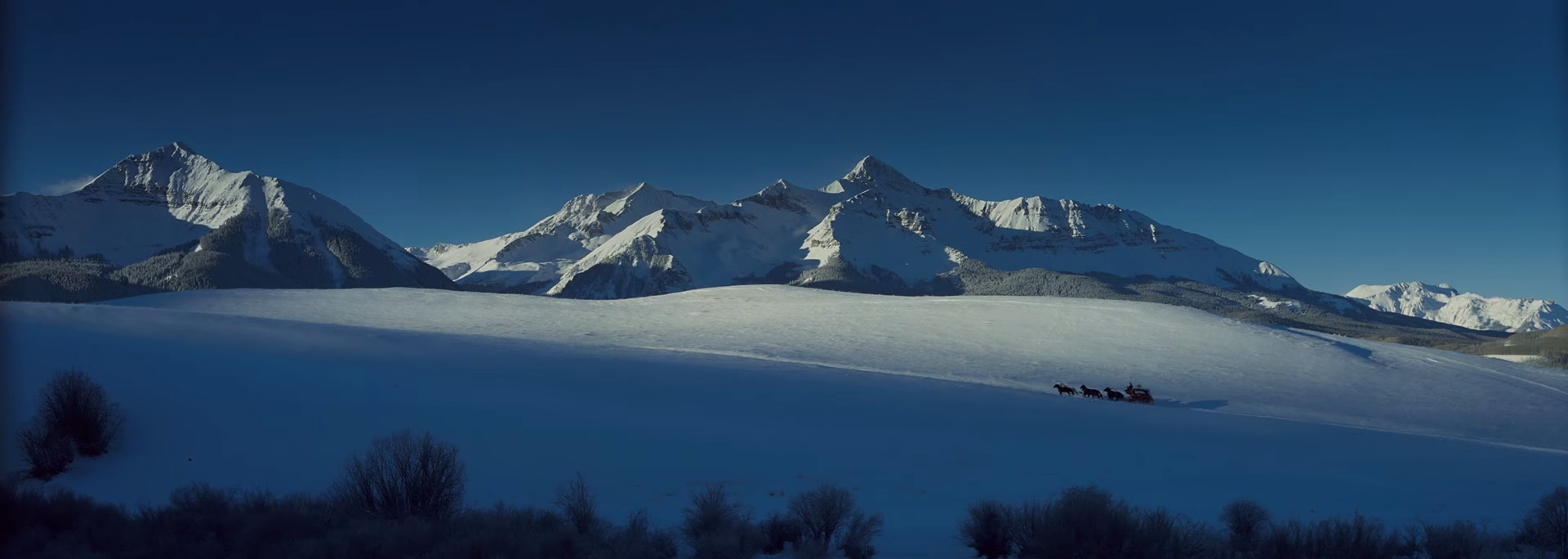
The Hateful Eight starts out with a six-horse stage coach ploughing its way through the snow-covered hills. On their way to seek refuge from an upcoming blizzard at Minnie’s Haberdashery, a coach line stop on top of the hills, being picked up first is a stranded bounty hunter, Marquis Warren (Samuel L. Jackson), who is stuck in the snow on foot after his horse died, his pile of frozen bodies awaiting transport to Red Rock, where he plans to collect the money on their heads. The stage is hired by one John Ruth, aka The Hangman (Kurt Russell), another bounty hunter who intends to bring Daisy Domergue (Jennifer Jason Leigh) to the gallows in Red Rock for the 10.000 dollar bounty. He trusts no one and has handcuffed his prisoner to himself. They are reluctantly admitting a fourth passenger, Chris Mannix (Walton Goggins), who claims to be traveling to Red Rock to be sworn in as its new Sheriff. They arrive at the haberdashery amidst increasing snow fall, eager to get their horses into the stable. Minnie and her friend are out of town, claims Bob (Demian Bichir) who takes care of the horses, and inside await a cowboy named Joe Gage (Michael Madsen), an Englishman who calls himself Oswaldo Mobray (Tim Roth) and there is a former confederate General named General Smithers (Bruce Dern) sitting in a chair by the fire. As the unlikely strangers all get settled in, the storm approaches. Something ties all these gentlemen together, as John Ruth starts pressing them on their backgrounds and Marquis Warren picks a fight with the Confederate. Tension run high… but who’s not who he seems?
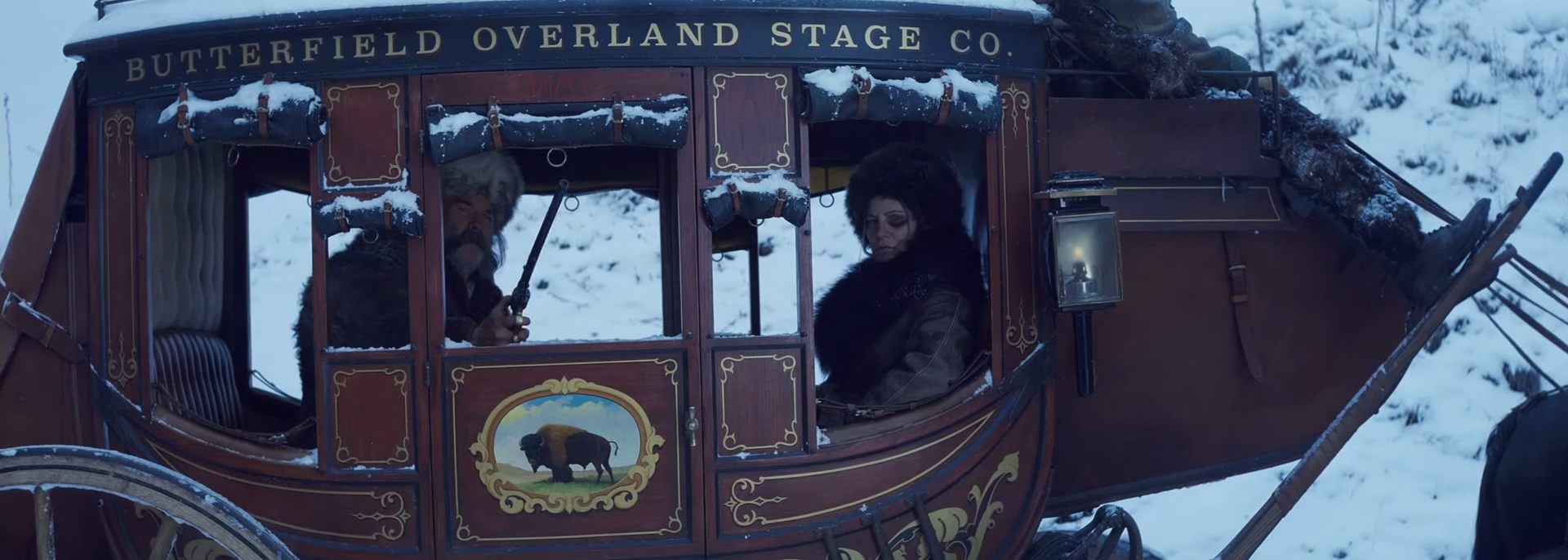
To go on a little detour, Quentin Tarantino‘s eight film has an unusual genesis. Its early draft script was leaked and subsequently published online. It initially discouraged the director, but after a very successful live script reading, he commenced rewriting it and started production just a short time afterwards. Quentin decided to shoot the film in 65mm with Ultra Panavision lenses, old equipment that had not been used in over 60 years. Backed by The Weinstein Company, they set out to refurbish ultimately about 100 theaters in the United States with 70mm projection capability, theaters that would then be able to screen the movie in a roadshow version. This experience of The Hateful Eight entails an intermission, an overture, a few minutes of extra footage, print programs and of course the film itself in its analog 70mm exhibition, a type of projection that requires a longer throw distance, refurbished projectors, training for the projectionists and costly upgrades. The movie was launched in this limited release form on Christmas Day in the US, and on January 1 this year, the movie started opening wide, and also internationally, country by country, with Quentin and TWC having hand-picked the distribution partners (as opposed to Sony or Universal Pictures handling all international distribution as happened with Django Unchained or Inglourious Basterds respectively). The movie picked up a number of nominations and awards already, especially the grand master of music composition Ennio Morricone, but also the female lead Jennifer Jason Leigh. Cinematographer Bob Richardson is also up for an Academy Award, the pioneering work on Ultra Panavision stands out among the other nominees, which include a 16mm presentation, a 32mm presentation, and among the other digitally shot nominees another sort-of Western, The Revenant. It is an exciting year for cinema.

So back to The Hateful Eight. Channeling John Carpenter‘s The Thing (who used only one piece of the score Ennio Morricone produced for it, the rest went to Tarantino for The Hateful Eight, plus extra compositions to flesh out the musical motives, we have a review of the soundtrack here), his own Reservoir Dogs, to some extent The Great Silence and his favorite episodes from TV shows like The Virginian, Quentin embarks on a so-called Kammerspiel of the extravagant sort. From the very beginning the audience is left without at doubt that this film is about to be of the sinister sort. The ominous soundtrack, the grim atmosphere and the wide angles transport a mood of foreboding, if not of imminent threat and suspicion. The movie opens up with glorious ultra wide Panavision shots of snow covered mountains and then folds into the narrow confines of the haberdashery, and the snow raging itself crescendo like outside. The haberdashery’s door is broken, so each time someone returns, it needs to be nailed shut. The reasons will reveal itself much later in the film, but it is a great metaphor pointing towards the fishiness of the situation. The proprietors of the place are gone, the door doesn’t work, there is an extra stage coach, and all those stranded are somehow related to each other… through something.
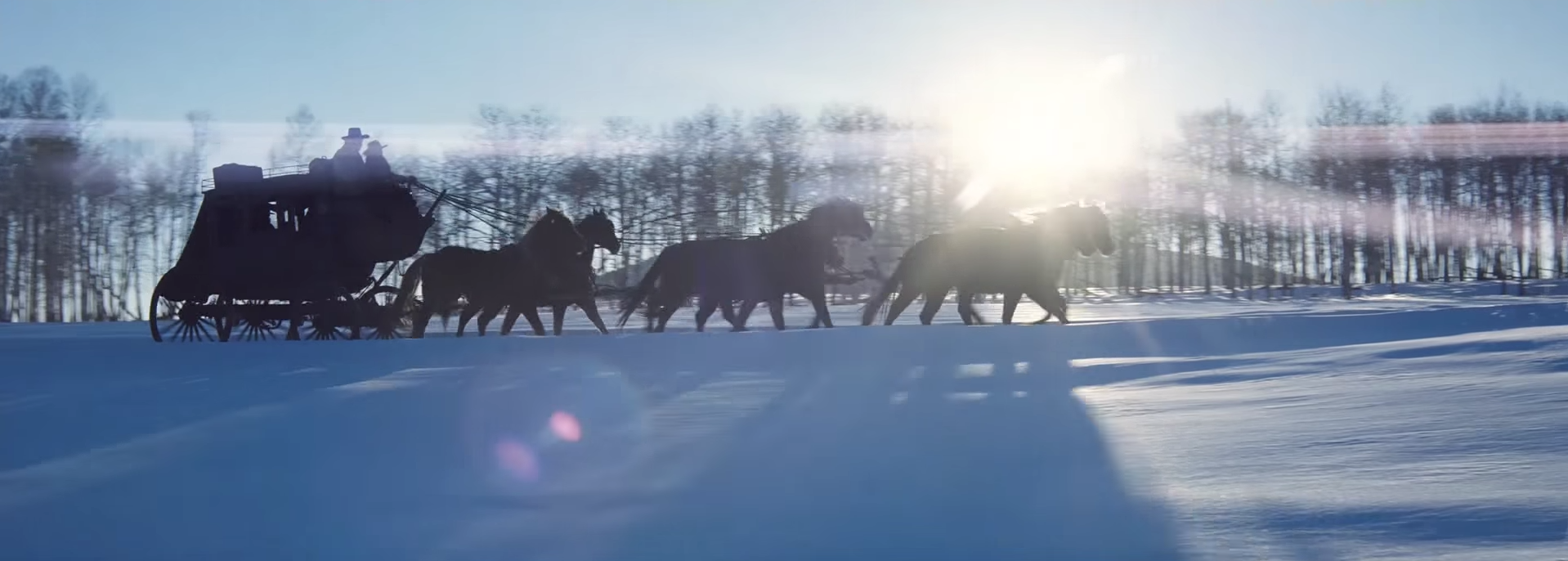
Quentin Tarantino has dabbled in these exercises of “whodunnit” before, of tricky clusterfucks in small places, be they an LA warehouse in Reservoir Dogs, a downstairs tavern in Inglourious Basterds, a dining room in Django Unchained or for that matter a truck stop night club in From Dusk Till Dawn. Throw a bunch of wackos into a place together, stir the pot and let it boil over. In doing so, Tarantino proves he can time and again let his movies be transported through his characters. While he does speak a small voice over in this movie, for the most part Tarantino is not a storyteller in the third person sense, his movies are windows into the lives of others and we are left to observe by hanging out with its characters. That is why most of his movies have more than a small percentage of screen time that could be described as “hang out movies”. The whole of Pulp Fiction qualifies, and most of The Hateful Eight does, too. His characters are immediately interesting, and charming in their own weird ways. My favorite is Bob, “The Mexican”, played by the amazing Demian Bichir. Which director would place Bruce Dern on a chair for an hour and do nothing else with this legend? There is hardly more than one female lead role in this movie, and that Daisy is being beaten bloody. Yet, even with all the bloodshed ensuing in this film, there isn’t a minute where it wouldn’t still be interesting to be sitting right there next to these hateful people and having coffee with them. That’s Tarantino.

As with all movies, there is a three fold dilemma of classification that any movie fan is intimately familiar with. Do I like a movie a lot, do I consider it a great work of art, and how rewatchable is it as a piece of entertainment. Three different ratings scales altogether. The Hateful Eight might be Tarantino’s greatest works of art, yet its mystery nature might decrease its rewatchability factor enormously (or not, as the audience can draw from other aspects of the movie as nurturing qualities). And, if one is looking for the instant gratification and bockbuster entertainment, it will not live up to Django Unchained or prior works. The Hateful Eight is different. Some pundits have described it as a “later work”, an exercise in maturity, or – one that I reject – him at his most self-indulgent. The movie is two things, in my opinion. It is for one, on top of all his other works which also are that, a penultimate throwback to the glorious celluloid days of old. Filmed in Ultra Panavision and exhibited in the resurrected 70mm format, it is a defiant stance against the death of film and an homage to the great wide screen western epics of old. Two, it is Tarantino playing puppet master with some of his favorite actors as puppets, and his mastery at writing dialogue as the strings and handle. Hardly any other directors have the skills today of transporting a movie only through an ensemble cast, a solitary location and great dialogue. Polanski failed miserably at Carnage, and I don’t think there will be many directors out there coming up with something new along the lines of 12 Angry Men. Tarantino is that caliber director.
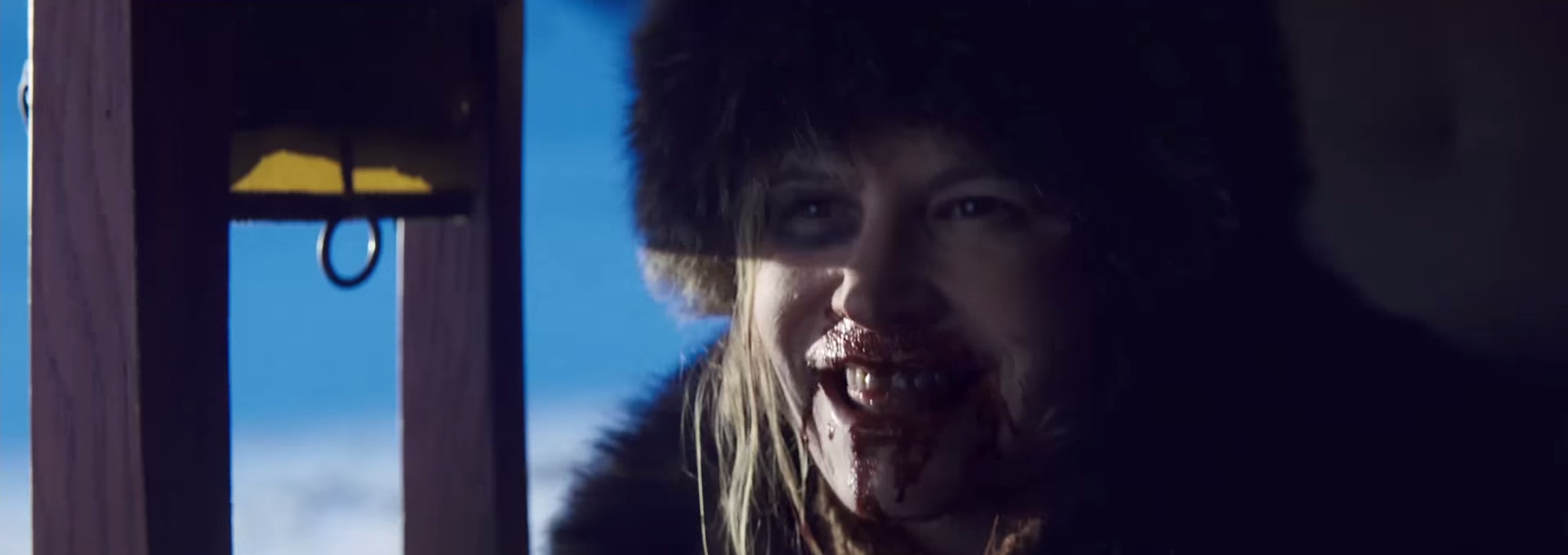
The Hateful Eight is enjoyable on three levels (oh my god yes I am gonna top the analytical part in just a bit, bear with me my friends). There is the obvious audio-visual level. The joy of the 70mm experience paired with the masterful Ennio Morricone score is a cinematic feast without equal. Then there is the theatrical ensemble cast at play level. This is where you enjoy hanging out and exploring these characters, where you come to love the actors and the dialogue. The last level is that of the Tarantinoverse in a broader sense. This last level is when you understand Quentin Tarantino the filmmaker beyond the hype, fanboydom, controversies and criticism and look at his body of work as a whole. That is when you get to experience a third level of The Hateful Eight, which might reveal itself only upon second or third viewing. It is that of realizing that it is a culmination of his craft, and how it draws on previous works and tops it with an extra dose of whipped cream, or condoms full of fake blood and brains. All those pseudo-critics out there lamenting the violence, mysogony and self indulgence fail at this level. They look at Tarantino’s works as steps of a staircase that seem to go all over as in Lady Winchester’s Mystery House. In fact, his works are steps of a winding staircase, and The Hateful Eight is close to this staircase’s final 360 degree angle. There are two more works more or less, and he will step onto another floor and be gone – we hope this doesn’t happen but there is a consistency reflected in numerous interviews where he points this out, and if you would watch his works backwards, ending up with a quick screening of My Best Friend’s Birthday (or what’s left of it), it will all make perfect sense to you.

Bob Richardson does an amazing job with this movie. The 70mm exposition is no mere gimmick. It’s not just another way to see it. While most of the people on this planet will never see the roadshow version, they will still experience The Hateful Eight. It’s that extra meta aspect, it’s crossing the is and dotting the ts, that is the roadshow version. When I spoke with Kurt Russell before the release of Grindhouse, he correctly said that it wasn’t just a movie, it was a night. It’s about the experience of cinema. Eight hateful years later, Kurt again teams up with Tarantino, and again, it’s not just a movie, it’s a night. The roadshow version is no quick trip to the multiplex, it’s an event movie. Even if you strip this away, seeing The Hateful Eight will still be an experience without equals. While the western certainly ain’t dead (more are coming out and the last few months and years did see a number of them), there aren’t many that celebrate the western as a genre as much as Tarantino does, he lifts it up to an altar level of appraisal. I dig westerns, Spaghetti Westerns mostly, but also the ultra realistic modern kind, as in Open Range, or almost mythical ones like Seraphim Falls, but recently I am also rediscovering the American Westerns of old, be they Budd Boetticher adventures or good old Joel McCrea ride outs. The wild west is as much a myth and metaphor driving American culture as the western is a genre that serves as a conduit for really amazing storytelling. That’s why it find itself in other genres from Samurai movies to Science Fiction. The Western is a genre where you can have the craziest characters come together in a stage coach among an impending blizzard, and a shootout in a haberdashery maybe. The Hateful Eight is a penultimate Western, even though it is at the same time so much of Tarantino that (as with most of his movies) a lot of people will really hate it just as much as a lot of movies will love it like crazy.
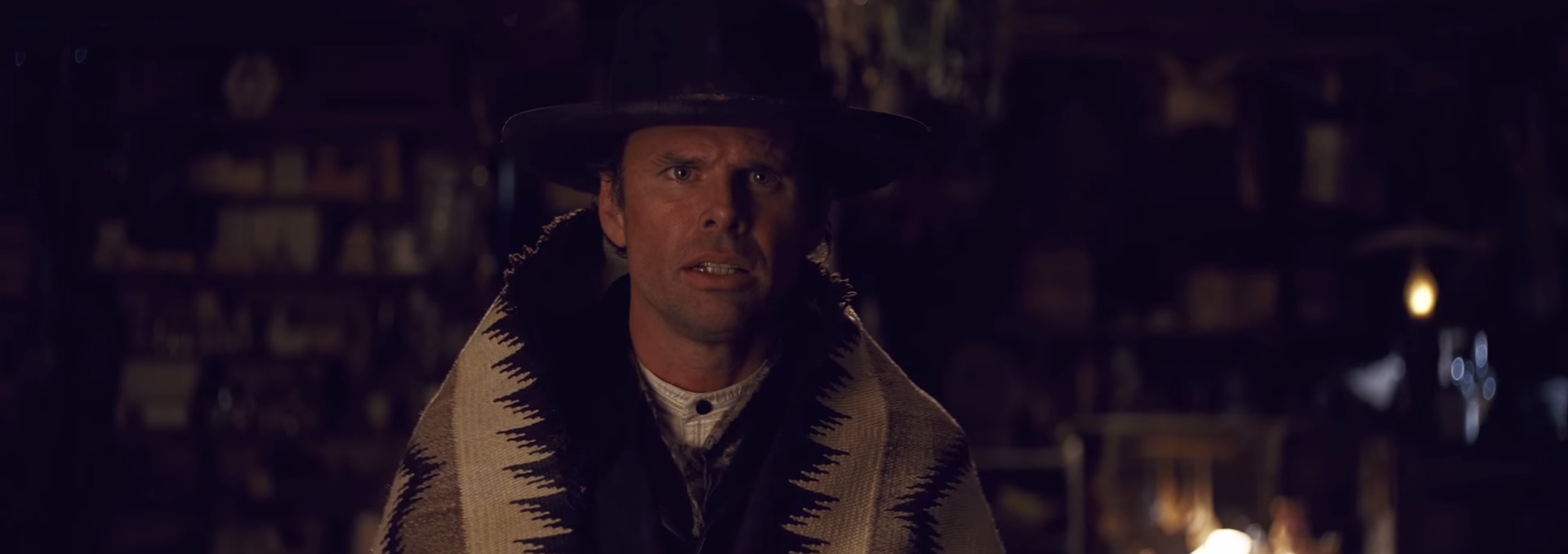
The stellar performances of all the actors and actresses involved, and yes that includes Channing Tatum, make The Hateful Eight an enjoyable ensemble cast film. This brings me to the last aspect I want to point out. What became clear to me is an almost shocking realization about Tarantino as a storyteller. Here is a director who has so much confidence in his material, he is not afraid of terminating any given character at any given moment without blinking an eye. That’s tough cookies for a hangout movie I grant you, and boy will you miss some of these characters, but at the same time there is something inherently satisfying about it. Quentin is unhindered by convention. This is no star vehicle, no Will Smith movie, no superhero blockbuster popcorn horseshit, when you watch The Hateful Eight, you’re in Tarantino country, and in Tarantino country, crazy shit can go down and you best believe my friends, nobody comes up to Minnie’s Haberdashery that time during the blizzard without a damned good reason, and if that means the end of you, it probably will, too.
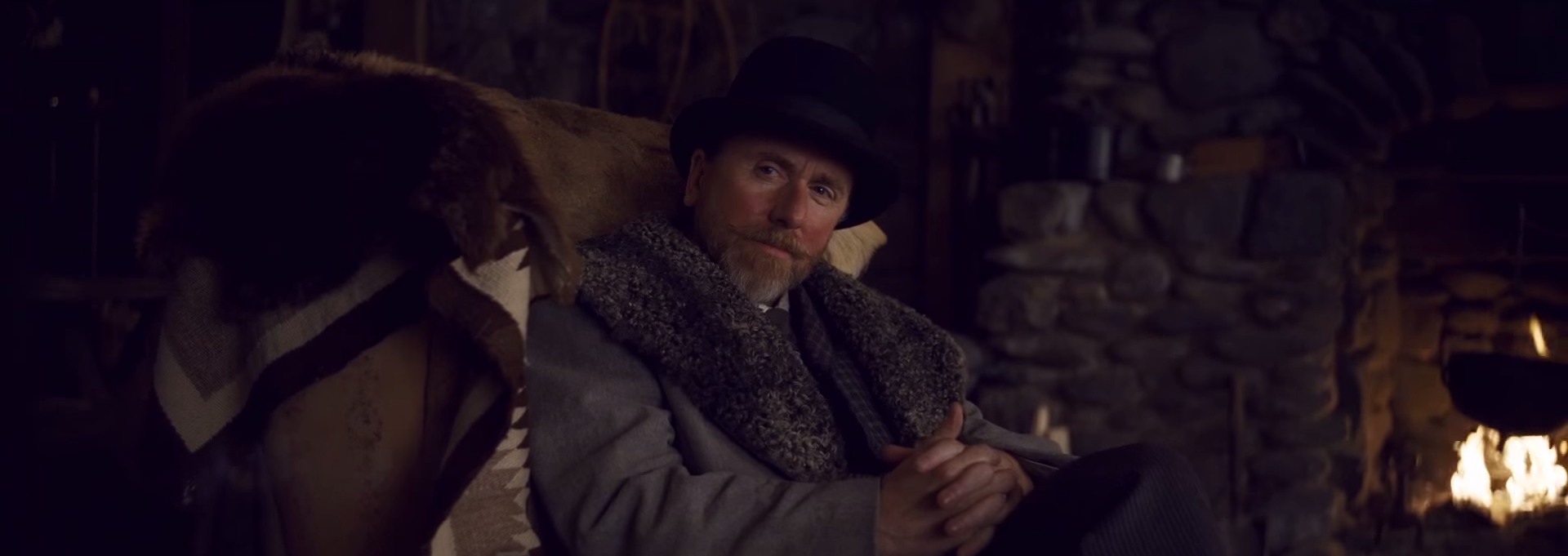
Does each review need to deal with a possible fourth level of the film? I don’t think so. But I do concede that there might be one, if you insist of interpreting it into the movie (which I don’t think is really necessary). Hate, racism and unresolved conflict are the fourth level. This movie isn’t about the civil war, it isn’t about racism, it’s not about hate. It’s a movie. But if there’s a sociopolitical subtext than that’s it. For some pundits it has become inevitable of discussing that in the context of this movie especially because of last year’s public debate about Quentin’s outspokenness on police brutality. I chose not to let that dominate my love of cinema as art and enjoyment most and foremost.

I have now seen the 70mm roadshow version of The Hateful Eight three times (one of it the dubbed German version), and I promised I would revise my conclusion to this review, so you’re now reading that revised text. I loved The Hateful Eight more with each viewing. The initial awe gave way to discovering nice details, enjoying the story play out and the dialogue and interplay of the actors. It is always a joy to see another Quentin Tarantino celebration of cinema and this movie is no exception to that joy. I mentioned above that there are three dimensions of rating a movie. I think the movie scores exceptionally high in terms of craftmanship. This is Tarantino’s finest directorial effort to date, despite some minor flaws that I think might have cost him the screenplay Oscar nomination. It is surprisingly rewatchable, too. While the mystery is of course ruined after the first time, the movie has other onion layers of theatrical richness that is great to witness time and again. With the UltraPanavision and 70mm format, I not only enjoy the aspect ratio, but especially the warmth and depth of the picture, the colors and texture, the contrast. It is an amazing way to see the movie. Lastly, it is a lot of fun. There will be laughs, as there are great lines and comedic moments, and there are “oooohs”, as heads are blown off and characters suffer crazy deaths. The Hateful Eight might not be everyone’s cup of tea, but one thing is clear, this is an unmissable cinematic opportunity, a once in a lifetime event at the movies that thou shalt not skip. Some of you will hate it, some of you will like other Tarantino movies better, and it might not have Pulp Fiction‘s lasting impact, that’s not the point. The point is that The Hateful Eight really ties the room together, and it’s the greatest representation of the thread that holds his filmography together yet.
[Review updated on Feburary 1st, 2016]
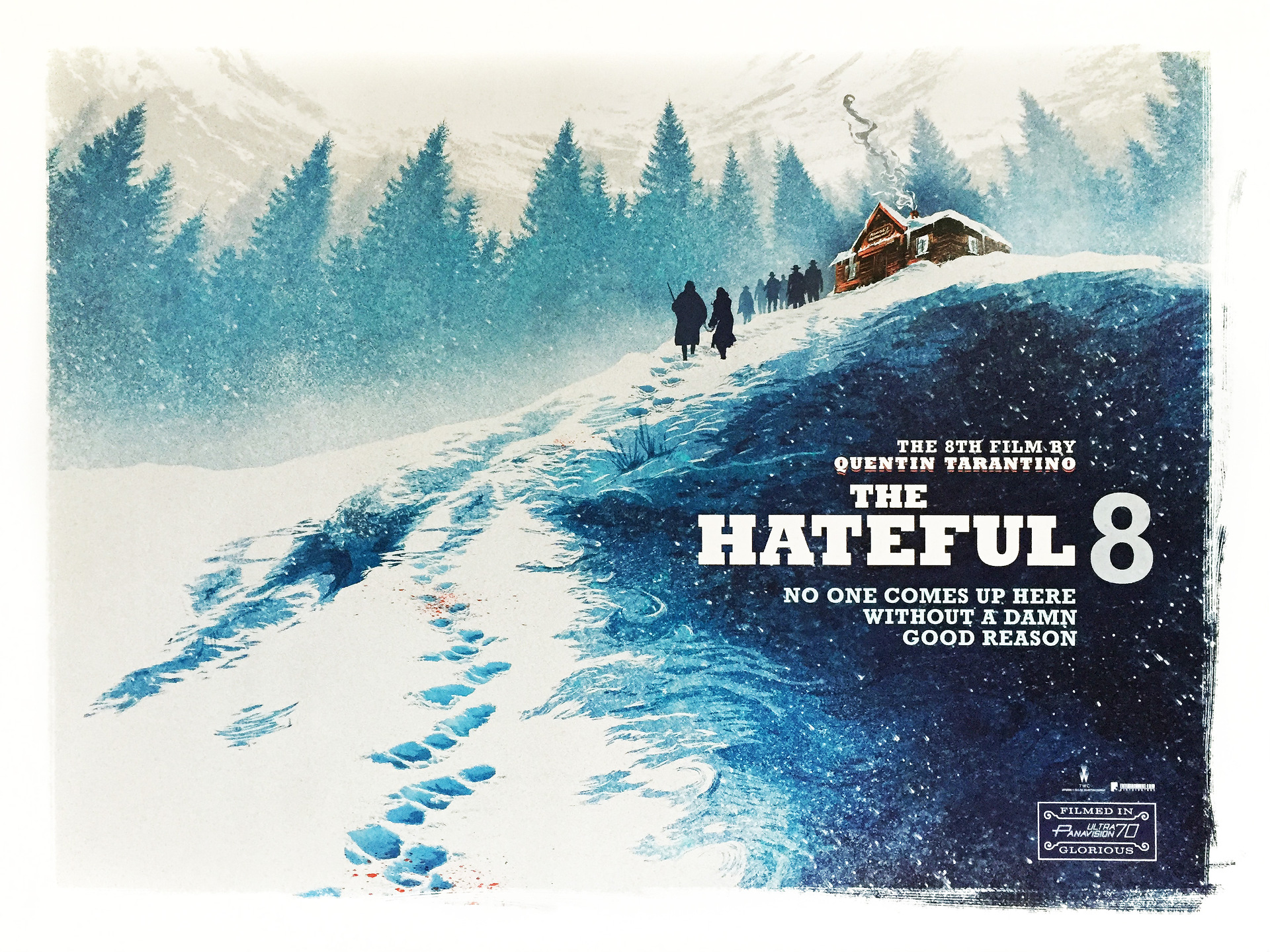








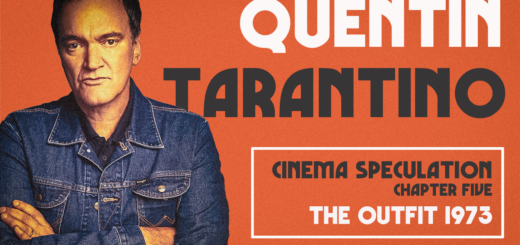




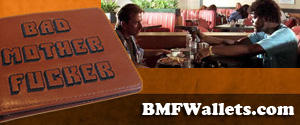
“Throw a bunch of wackos into a place together, stir the pot and let it boil over.”
The perfect description of this flick. Very enjoyably written review for a very enjoyable movie.